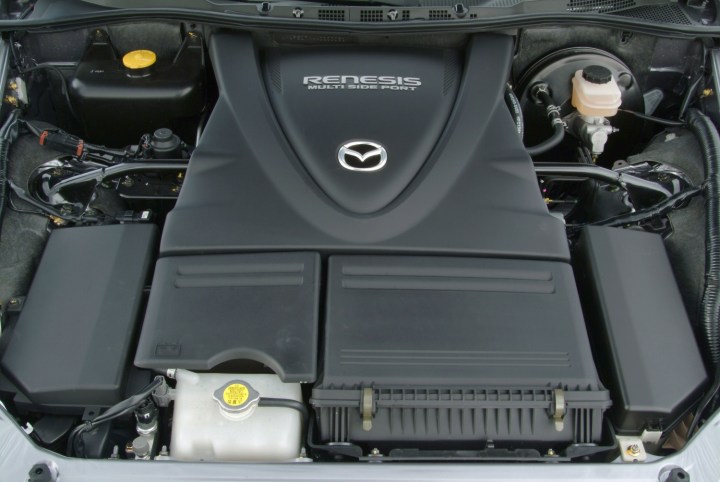
There have been rumors of a rotary return, but given Mazda’s apparent official disinterest in a new sports car, they’ve seemed more like wishful thinking than indicators of the future. That doesn’t mean Mazda isn’t still interested in rotaries, though. The company has a research team working on them, according to Autocar.
Speaking to the magazine at the 2015 Frankfurt Motor Show, Mazda president Masamichi Kogai said this dedicated engineering team is working “very enthusiastically” to bring rotary engines up to the standards of current piston engines. Fuel-consumption and emissions performance were among the drawbacks of previous rotary engines and, in today’s stricter regulatory environment, those factors will likely make or break any potential new rotary-powered model.
Kogai would not elaborate on why Mazda is still experimenting with rotary engines. Company officials have repeatedly denied rumors of an RX-7 or RX-8 successor. Over the past few years, Mazda has largely eschewed low-volume models in favor of building up its core range of sedans and crossovers.
It’s possible Mazda will use rotary engines for something other than a new sports car. The carmaker previously demonstrated a hybrid powertrain that used a rotary in concert with an electric motor, so maybe that’s what the research effort will ultimately lead to.
Fuel efficiency does seem to be Mazda’s primary focus right now. Speaking to Auto Express in Frankfurt, Kogai said the company is aiming for a 30-percent improvement in fuel economy for its next generation of Skyactiv engines, and added that the firm is conducting consumer trials with hybrid and electric cars in Japan.
Editors' Recommendations
- How engineers for NASA’s Ingenuity helicopter do tech support on another planet
- Here’s why the Mazda MX-30 has such a small, low-range battery pack
- Can you imagine a Miata with a plug? Mazda says it’s possible
- Mazda’s MX-30 challenges the commonly accepted definition of an EV
- New Android phones must support USB-C PD and Digital Wellbeing, Google says


